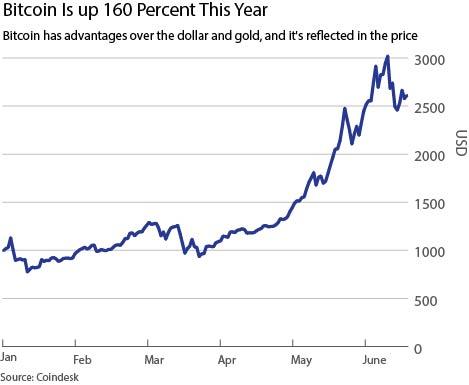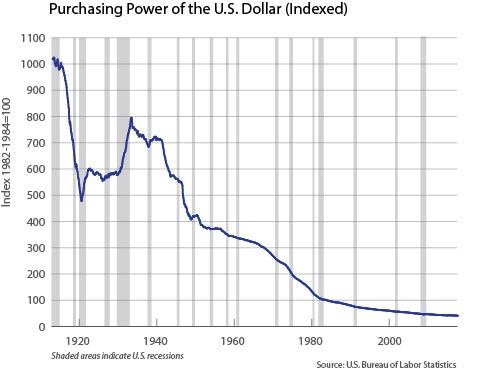James Rickards, author of “The Road to Ruin,” has successfully predicted Federal Reserve (Fed) policy in the past. In this interview with The Epoch Times, he explains why the recent tightening could lead to a recession and why he recommends gold as a “crisis hedge.” He also explains why he thinks bitoin is in a bubble.
The Epoch Times: Why did the Federal Reserve (Fed) hike rates last week, and what will its policy look like in the future?
James Rickards: They’re trying to prepare for the next recession. They’re not predicting a recession, they never do, but they know a recession will come sooner rather than later. This expansion is 96 months old. It’s one of the longest expansions in U.S. history. It’s also the weakest expansion in U.S. history. A lot of people say, “What expansion? Feels like a depression to me.”
I think it is a depression defined as depressed growth, but we’re not in a technical recession and haven’t been since June 2009. So it’s been an eight-year expansion at this point, but it won’t fare well, and the Fed knows that. When the U.S. economy goes into recession, you have to cut interest rates about 3 percent to get the United States out of that recession.
Well, how do you cut interest rates by 3 percent when you’re only at 1 percent? The answer is, you can’t. You’ve got to get them up to 3 percent to cut them back down, maybe to zero, to get out of the next recession. So that explains why the Fed is raising interest rates. That’s the fourth rate hike getting them up to 1 percent. They would like to keep going; they would like to get them up to 3, 3.5 percent by 2019.
My estimate is that they’re not going to get there. The recession will come first. In fact, they will probably cause the recession that they’re preparing to cure. So let’s just say we get interest rates to 1 percent and now you go into recession. We can cut them back down to zero. Well, now what do you do? You do a new round of quantitative easing (QE).
The problem is that the Fed’s balance sheet is so bloated at $4.5 trillion. How much more can you do—$5 trillion, $5.5 trillion, $6 trillion—before you cause a loss of confidence in the dollar?
There are a lot of smart people who think that there’s no limit on how much money you can print. “Just print money. What’s the problem?” I disagree. I think there’s an invisible boundary. The Fed won’t talk about it. No one knows what it is. But you don’t want to find out the hard way.
The Epoch Times: What about balance sheet reduction, reversing the QE that you are talking about?

Mr. Rickards: You probably want to get from $4.5 trillion, down to $2.5 trillion. Well, you can’t sell any treasury bonds. You destroy the market. Rates would go up, putting us in recession, and the housing market would collapse. They’re not going to do that. What they’re going to do is just let them mature.
When these securities mature, they won’t buy new ones. They won’t roll it over, and they actually will reduce the balance sheet and make money disappear. They’re going to do it in tiny increments, maybe $10 billion a month or $20 billion a month.
They want to run this quantitative tightening in small increments and pretend nothing’s happening. But that’s nonsense. It’s just one more way of tightening money in a weak economy; it will probably cause a recession.
The Epoch Times: If it does, the stock market will probably correct, and you recommend people buy a small allocation in physical gold to insure themselves against this outcome.
Mr. Rickards: If the economy weakens, as I expect it will, and you see the stock market correct and inflation go down, the Fed’s going to have to flip-flop for the ninth time since May 2013.
Once they send out the signal, they are going to throw in the towel, at least temporarily. They’re not going to raise rates. You take the rate hike expectations out of the market that looks inflationary at the margin, and that’s very bullish for gold. So I look for gold to have a very strong second half.
The Epoch Times: You also talk about price manipulation and that the ultimate price potential for gold may only be realized in the long term.
Mr. Rickards: Every five, six, seven years, financial crises happen. It’s been eight years since the last one. How long do you think we’re going to go? So that is a catalyst for much higher gold prices.
But I don’t worry much about manipulation. I know it goes on, and I know why it goes on, as I spoke to the statistician’s expert witnesses in some of the pending litigation on gold manipulation.
On June 6th, for example, gold got whacked 2 percent because somebody sold $4 billion’s worth of future contracts on the COMEX. Gold was getting close to $1,300 an ounce.
The impact on the markets is like selling $4 billion in gold. But it wasn’t gold. It was paper gold.
Four billion dollars’ worth of gold is 90 tons. Do you think you could sell 90 tons of physical? You can’t source 90 tons of real gold. You are lucky if you can get a couple of tons of gold. All the mines in the world produce a little over 3,000 tons a year. Those 90 tons are close to 3 percent of all the output of all the gold in the world, with one phone call.
But the point is, all manipulations fail. Jim Fisk and Jay Gould ran a gold corner in 1869, and it failed. The London Gold Pool in the late 1960s failed.
So just get your gold allocation—I recommend 10 percent of investable assets—and put it in a safe place, keep out of the banking system, and sit tight.

The Epoch Times: What about the electronic currency bitcoin?
Mr. Rickards: Dollars, euros, yuan, gold, and bitcoin are five different kinds of money, but they’re not investments. They’re money. If I buy stock in a company, I can look at management, I can look at earnings, I can look at a whole bunch of things to come up with an evaluation. That’s an investment.
But bitcoin is not an asset class. It’s not an investment. It’s just money. If I buy bitcoin, I’m swapping one kind of money for another.
So when you see bitcoin go from $1,000 to $2,000 or $3,000, what’s happening? If one bitcoin is my unit of measurement, then the dollar is going down. So one possibility is that people are losing confidence in the dollar.
Is there any other evidence for that? If people are losing confidence in the dollar, it would be reflected in a lot of places. Gold would be going up. Oil would be going up. Real estate would be going up.
Except that what we have is bitcoin going up and everything else not. Gold’s up a little, but you know all these things go up a little bit, not by a lot. Bitcoin’s the only one that’s going up a lot. So that tells you empirically that this is not a generalized loss of confidence in the dollar or the euro and other currencies. I think that will come, but we’re not there yet.
So if that’s not the explanation, what is? One is the greater fool theory, which is, “I‘ll pay $2,000 for bitcoin because I think there’s some sucker who will pay me $3,000.” And that guy says, “Well, I’ll pay $3,000 for a bitcoin because of some sucker that will pay me $4,000.” That’s called the greater fool theory.
That works until it doesn’t. There comes a time when you’re the sucker—as the old joke goes, if you’re in a poker game and you don’t know who the sucker is, you’re the sucker.
There is no evidence that there’s a general collapse in the dollar. I expect that will happen for other reasons at a different time, but not yet. Bitcoin looks like a bubble.
Interview edited for brevity and clarity





Friends Read Free